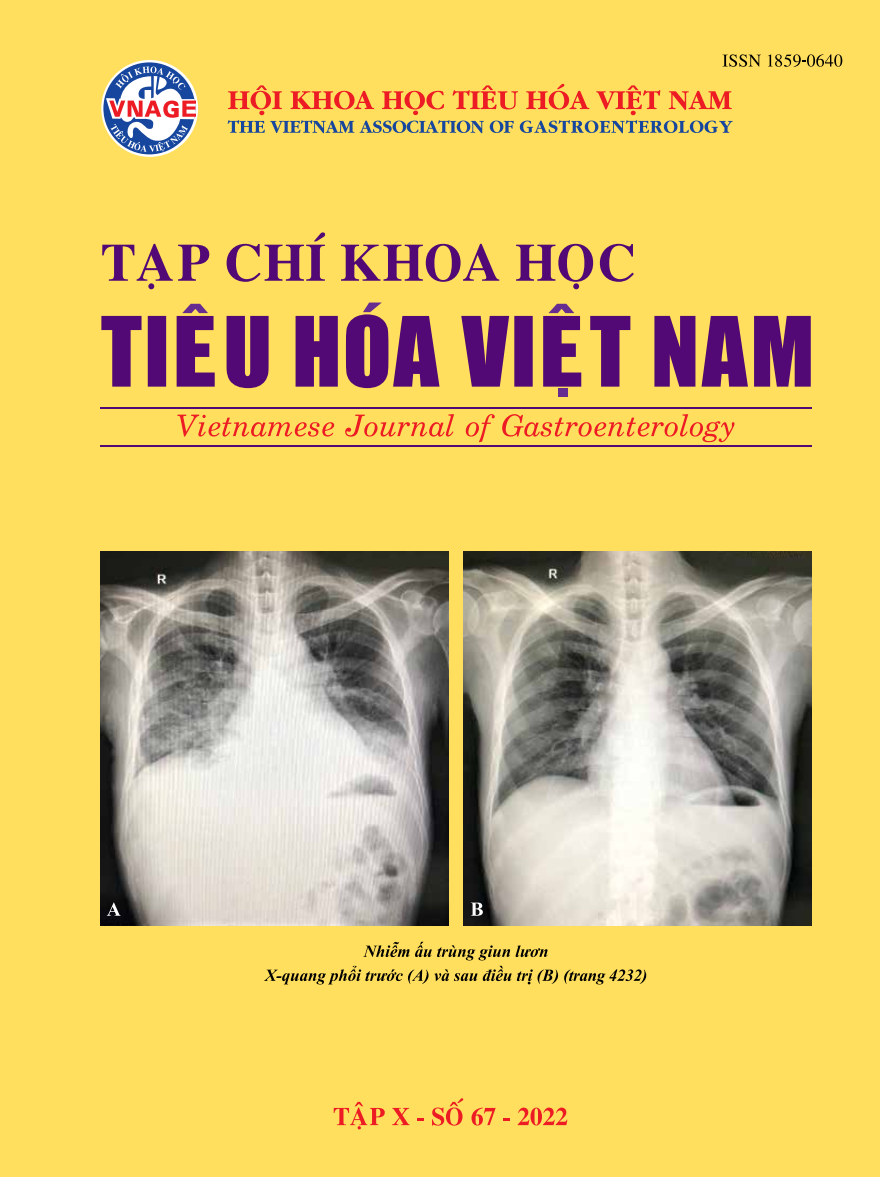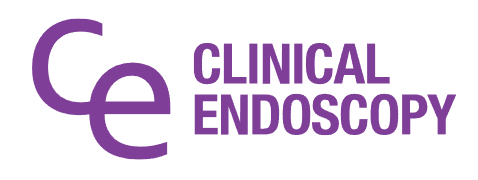Hội chứng tăng nhiễm ấu trùng giun lươn trên bệnh nhân phụ thuộc corticoid
Từ khóa:
Giun lươnTóm tắt
Giun lươn (Strongyloides stercoralis) phân bố chủ yếu ở khu vực nhiệt đới và cận nhiệt đới trên thế giới. Nhiễm bệnh thường gặp ở các khu vực vệ sinh kém, nông thôn và các cộng đồng héo lành. Di chuyển của ấu trùng giun lươn qua các cơ quan khác nhau gây ra biểu hiện cấp và mãn tính từ không triệu chứng tới nặng và tử vong tới 85% - 90% trong hội chứng tăng nhiễm và nhiễm giun lươn lan tỏa [1]. Biểu hiện lâm sàng của bệnh phong phú, không đặc hiệu do tình trạng toàn thân nhiều cơ quan và nhiễm trùng cô hội dẫn đến chẩn đoán bệnh thường muộn và rất khó khăn. Chúng tôi báo cáo trường hợp hội chứng tăng nhiễm trên bệnh nhân phụ thuộc corticoid, không có triệu chứng điển hình nhiễm ký sinh trùng giun lươn. Biểu hiện lâm sàng suy mòn, sút 30 kg/4 tháng, nhập viện với tình trạng viêm phổi lan tỏa, tràn dịch màng phổi, bạch cầu aùi toàn máu ngoại vi bình thường. Chẩn đoán nhiễm giun lươn qua hình ảnh nội soi, sinh thiết niêm mạc tá tràng và xét nghiệm huyết thanh. Bệnh nhân được điều trị bằng albendazol (Zentel) 400 mg/ngày trong 12 ngày, ra viện sau 31 ngày. Ca lâm sàng này nhấn mạnh việc tầm soát giun lươn ở những người được điều trị corticoid, suy giảm miễn dịch, đặc biệt những bệnh nhân đến từ những vùng dịch tễ của bệnh. Chẩn đoán đúng và kịp thời có thể cứu sống bệnh nhân.
Tài liệu tham khảo
1. Centers for Disease Control and Prevention (2021). Parasites - Strongyloidiasis - Parasite Biology: Geographic Distribution, 2021.
2. K, Krolewiecki A; Nutman TB (2019), Strongyloidiasis: A Neglected Tropical Disease. Infect Dis Clin North Am. 2019; 33(1):135-151 (ISSN: 1557-9824), 2019.
3. Medscape, Strongyloidiasis: Background. https://emedicine.medscape.com/article/229312-overview.
4. Henriquez-Camacho, C., et al., Ivermectin versus albendazole or thiabendazole for Strongyloides stercoralis infection. The Cochrane database of systematic reviews, 2016. 2016(1): p. CD007745-CD007745.
5. Vasquez-Rios, G., et al., Strongyloides stercoralis hyperinfection syndrome: a deeper understanding of a neglected disease. J Parasit Dis, 2019. 43(2): p. 167-175.
6. Kassalik, M. and K. Mönkemüller, Strongyloides stercoralis hyperinfection syndrome and disseminated disease. Gastroenterology & hepatology, 2011. 7(11): p. 766-768.
7. Vinh, L.Ñ., Nghieân cöùu thöïc traïng, moät soá yeáu toá lieân quan ñeán nhieãm giun löôn Strongyloides spp vaø keát quaû ñieàu trò baèng ivermectin taïi huyeän Ñöùc Hoøa, tænh Long An (2017-2018). Luaân aùn tieán só y hoïc, Vieân Soát reùt - Kí sinh truøng - Coân truøng trung öông, 2018.
8. Pirisi, M., et al., Unsuspected strongyloidiasis in hospitalised elderly patients with and without eosinophilia. Clin Microbiol Infect, 2006. 12(8): p. 787-92.
9. Boulware, D.R., et al., Maltreatment of Strongyloides Infection: Case Series and Worldwide Physicians-in-Training Survey. The American Journal of Medicine, 2007. 120(6): p. 545.e1-545.e8.
10. Rodrigues, R.M., et al., IgG1, IgG4, and IgE antibody responses in human strongyloidiasis by ELISA using Strongyloides ratti saline extract as heterologous antigen. Parasitol Res, 2007. 101(5): p. 1209-14.
11. Abdul-Fattah, M.M., et al., Efficacy of ELISA in diagnosis of strongyloidiasis among the immune-compromised patients. J Egypt Soc Parasitol, 1995. 25(2): p. 491-8.
12. Salvador, F., et al., Usefulness of Strongyloides stercoralis serology in the management of patients with eosinophilia. Am J Trop Med Hyg, 2014. 90(5): p. 830-4.
13. Buonfrate, D., et al., Accuracy of molecular biology techniques for the diagnosis of Strongyloides stercoralis infection-A systematic review and meta-analysis. PLoS Negl Trop Dis, 2018. 12(2): p. e0006229.
14. Centers for Disease Control and Prevention (2021). Parasites - Strongyloidiasis - Parasite Biology: Geographic Distribution.
15. Anamnart, W., et al., Factors Affecting Recovery of Strongyloides stercoralis Larvae: an Approach to a Newly Modified Formalin-Ether Concentration Technique for Diagnosis of Strongyloidiasis. 2010. 48(1): p. 97-100.
16. Kishimoto, K., et al., Endoscopic and histopathological study on the duodenum of Strongyloides stercoralis hyperinfection. World journal of gastroenterology, 2008. 14(11): p. 1768-1773.
17. Krolewiecki, A. and T.B. Nutman, Strongyloidiasis: A Neglected Tropical Disease. Infect Dis Clin North Am, 2019. 33(1): p. 135-151.
18. Requena-Meùndez, A., et al., The laboratory diagnosis and follow up of strongyloidiasis: a systematic review. PLoS Negl Trop Dis, 2013. 7(1): p. e2002.









